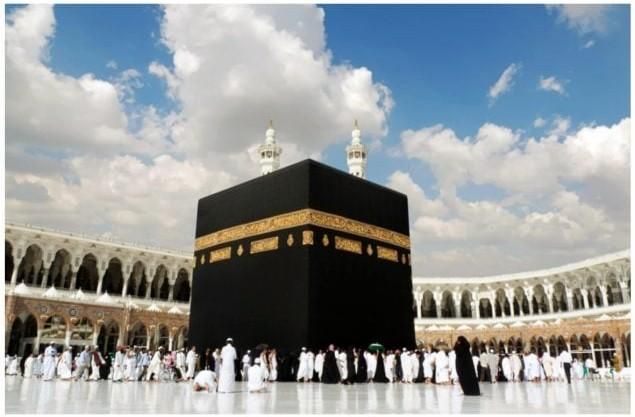The deaths of 1,300 pilgrims during last year’s Hajj in Saudi Arabia highlighted the critical need to address the risks posed by extreme heat, with crowd management seen as a key priority, according to analysts.
In June, temperatures in Mecca soared to 51.8 degrees Celsius (125 degrees Fahrenheit) as 1.8 million worshippers participated in the annual pilgrimage, a fundamental practice in Islam.
Saudi authorities reported that 83% of the 1,301 fatalities involved pilgrims without official Hajj permits, preventing them from accessing facilities designed to ease the pilgrimage, such as air-conditioned tents.
This incident was a prominent example of the devastating impact of heat in 2024, which was declared the hottest year on record by the Copernicus Climate Change Service on Friday.
The vast majority of Hajj pilgrims come from abroad, and diplomats involved in their countries' responses to last year's crisis told Agence France-Presse (AFP) at the time that most deaths were heat-related.
While Riyadh has not detailed preparations for this year's pilgrimage – still five months away – authorities will no doubt want to avoid a repeat, said Abderrezak Bouchama of Saudi Arabia's King Abdullah International Medical Research Center.
"I think they will, above all, reduce the risk of illegal pilgrims," said Bouchama, who has worked with the Saudi government for more than three decades on reducing heat deaths.
"I think they've learned their lesson, so we have to see what kind of measures they have taken for that."
Other steps to make the heat less perilous, such as introducing wearable sensors to detect heat stress quickly, are long-term projects that likely won't be rolled out by June, Bouchama added.
Saudi officials did not respond to AFP's requests for comment.
'Perfect storm'
The Hajj takes place over five to six days, mostly outdoors.
It has seen several disasters over the years, including in 2015, when a stampede during the "stoning the devil" ritual in Mina killed up to 2,300 people.
Responses in the past have "typically focused on infrastructure improvements and crowd control measures," said Karim Elgendy, an associate fellow at the Chatham House think tank.
"Based on this pattern, we would expect authorities to approach the 2025 Hajj with enhanced heat mitigation infrastructure and potentially stricter capacity controls."
Hajj permits are allocated to countries on a quota system and distributed to individuals by lottery.
But even for those who can obtain them, the steep costs spur many to attempt the Hajj without a permit, though they risk arrest and deportation if caught.
The introduction of a general tourism visa in 2019 has made it easier for all foreigners, including permit-less pilgrims, to enter the country.
Sealing off entry points to Mecca is "very difficult," meaning Saudi authorities should expect irregular pilgrims again this year, said Umer Karim, an expert on Saudi politics at the University of Birmingham.
Saudi authorities "need to make arrangements not just for registered numbers but also for additional numbers," particularly for cooling and emergency health facilities, he said.
Yet Elgendy stressed last year's deaths were the product of "an unprecedented perfect storm of environmental conditions," not just a strain on resources caused by unregistered pilgrims.
In addition to high temperatures, "the summer solstice timing meant pilgrims faced maximum sun exposure during outdoor rituals," he said.
The Hajj's timing is determined by the Islamic lunar calendar and will move forward about 11 days in the Gregorian calendar, meaning this year it will again fall during the scorching Saudi summer.
'Extreme danger'
Authorities were pursuing heat-mitigation measures at holy sites long before last year's deaths.
Near the Kaaba, the black cubic structure in the Grand Mosque in Mecca, toward which all Muslims pray, air-conditioned spaces allow pilgrims to cool off and a climate-controlled pathway connects the hills of Safa and Marwa inside the mosque compound.
Since 2023, roads used by the faithful have been covered in a white cooling material that Saudi officials say reduces the temperature of the asphalt by 20%.
Volunteers also distribute water and umbrellas and advise pilgrims on avoiding hyperthermia, while misting systems and air-conditioned shopping malls provide temporary relief between prayers.
"Air conditioning is the only effective measure to protect against extreme heat," said Bouchama, calling for mobile cooling units to be deployed among pilgrims.
"Drinking water helps to rehydrate, but it is not enough. You have to get out of the heat."
He said that even if such steps aren't in place by this year's Hajj in June, they are still worth pursuing.
While the pilgrimage will eventually shift to the cooler winter season, relief will be temporary.
A 2019 study published in the journal Geophysical Research Letters said that due to climate change and the timing of the Hajj, the heat stress of pilgrims will exceed the "extreme danger threshold" from 2047 to 2052 and 2079 to 2086.








.svg)
